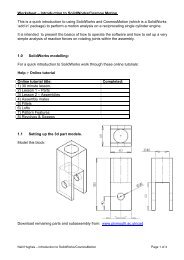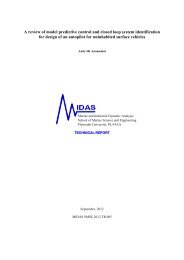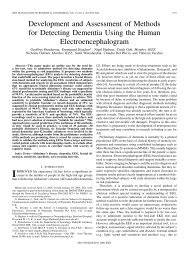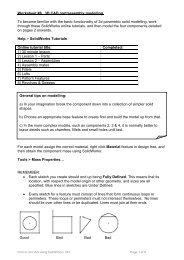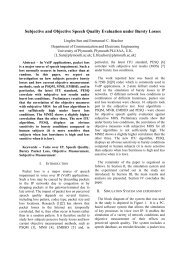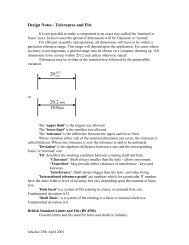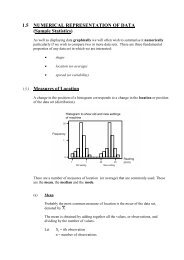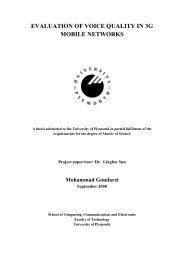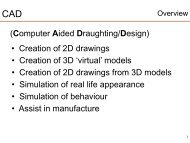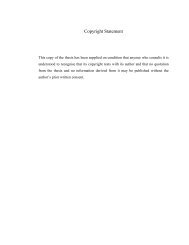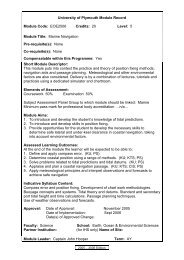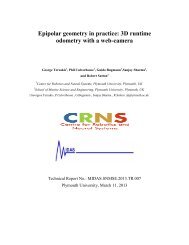Designing an Anaphora Resolution Algorithm for Route Instructions
Designing an Anaphora Resolution Algorithm for Route Instructions
Designing an Anaphora Resolution Algorithm for Route Instructions
You also want an ePaper? Increase the reach of your titles
YUMPU automatically turns print PDFs into web optimized ePapers that Google loves.
15) Example of Take-Action<br />
u6\_GC\_CM\_3.wav so you go over the bridge [2] but instead of carrying straight on [3]<br />
take a right [4] \\<br />
u6\_GC\_CM\_4.wav carry on down that road [5] …<br />
1. update DM: … post_office1(sg., BUILDING, [], [], 1.1)<br />
bridge1(sg., TRANSITION, [], [], 2.1)<br />
take a right Æ ‘take the next road on your right’ (elliptic TAKE)<br />
road1(sg., PATH, [in(right_region)], [next], 4.1)<br />
Poesio & Modjeska (2002) describe this kind of reference to implicitly introduced<br />
entities. Not only in the corpus they <strong>an</strong>alysed but also in the IBL-corpus ‘This-NP’-<br />
<strong>an</strong>aphors also refer to elements of previously mentioned complex_entities or vice<br />
versa. For this reason, the RIAR-algorithm makes use of the implicit S-List. If the<br />
<strong>an</strong>aphor type is <strong>an</strong> element_entity, the implicit S-List contains the corresponding<br />
complex_entity <strong>an</strong>d vice versa. As the referent of the <strong>an</strong>aphor might be explicitly<br />
mentioned in the previous utter<strong>an</strong>ce or it might be introduced implicitly by a TURNaction,<br />
the algorithm firstly builds up <strong>an</strong> S-List. Only if the S-List is empty <strong>an</strong>d if the<br />
<strong>an</strong>aphor type is <strong>an</strong> element_entity, will the algorithm construct <strong>an</strong> implicit S-List at<br />
the unit the <strong>an</strong>aphor occurs in. But since the entities referred to by ‘This-NP’-<br />
<strong>an</strong>aphors are not necessarily highly salient, the algorithm creates a new S-List at the<br />
previous unit. If this S-List is also empty, a new implicit S-List is constructed. This<br />
goes on until <strong>an</strong> <strong>an</strong>tecedent is found within the S-List or implicit S-List of the two<br />
previous units. If <strong>an</strong> <strong>an</strong>tecedent is found within these units, a new entity of the same<br />
type as the <strong>an</strong>aphor is created at the unit the <strong>an</strong>aphor occurs in <strong>an</strong>d the <strong>an</strong>aphor is<br />
resolved to this new entity. The new entity is derived from the related entity.<br />
However, if no <strong>an</strong>tecedent is found, which is similar to the derived entity, a new<br />
entity of the same type as the <strong>an</strong>aphor is created at the unit the <strong>an</strong>aphor occurs in.<br />
Again, the <strong>an</strong>aphor is resolved to this new entity but in contrast this entity is<br />
additionally marked as deictic referential to the visual situation, because it is not<br />
previously introduced into the discourse by l<strong>an</strong>guage but by visual input at the actual<br />
situation. If the <strong>an</strong>aphor type is not <strong>an</strong> element- or complex-entity, the same<br />
procedure is applied with the exception that no implicit S-List is constructed because<br />
the entities referred to by This-NP-<strong>an</strong>aphors are not necessarily highly salient. So the<br />
44



